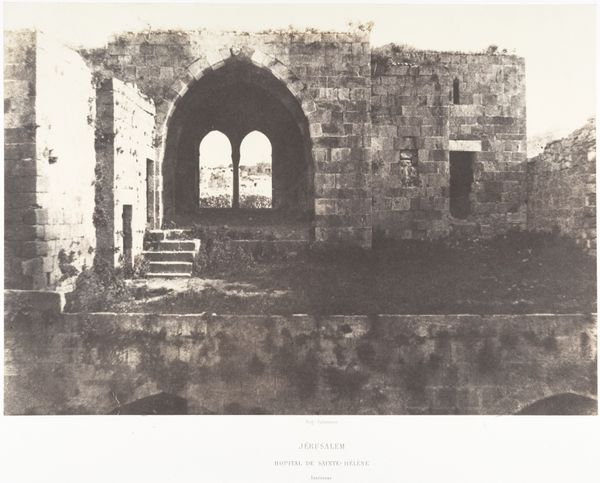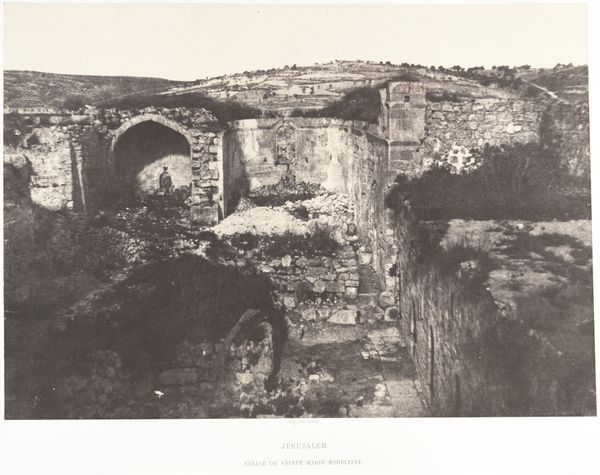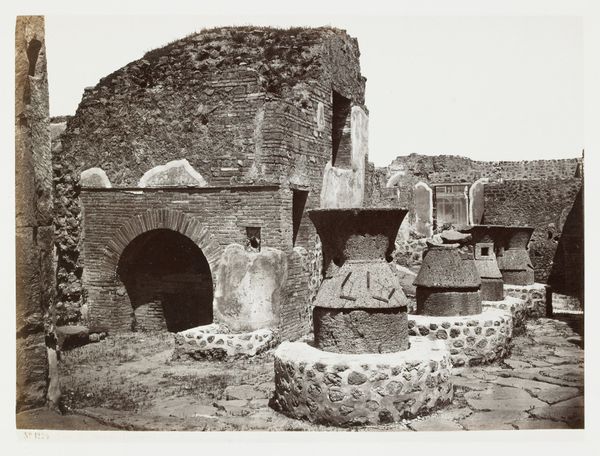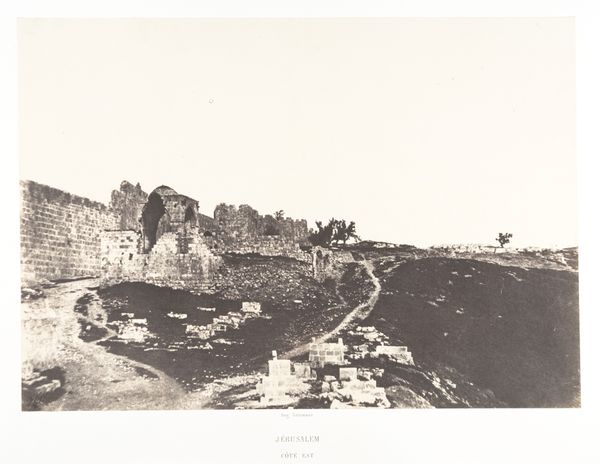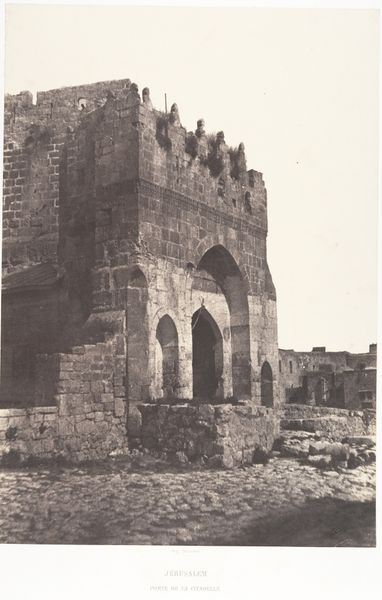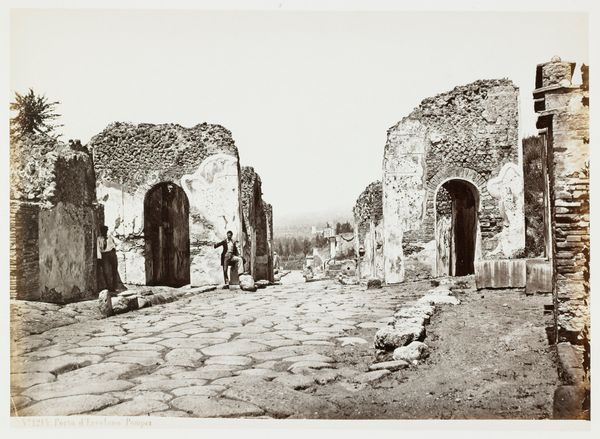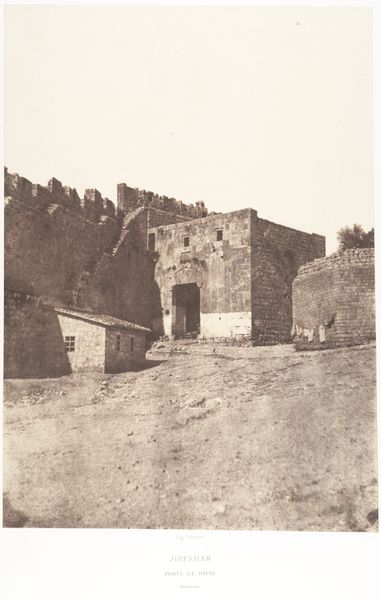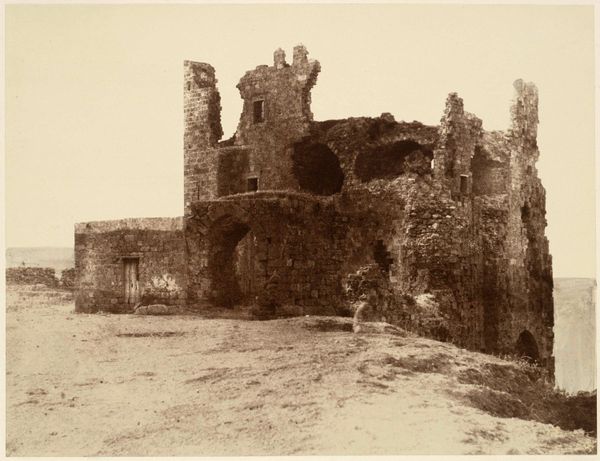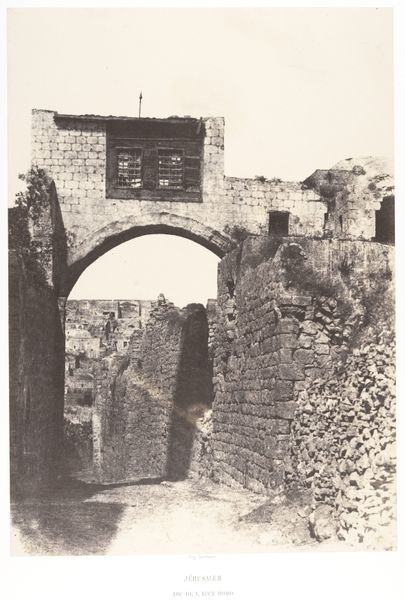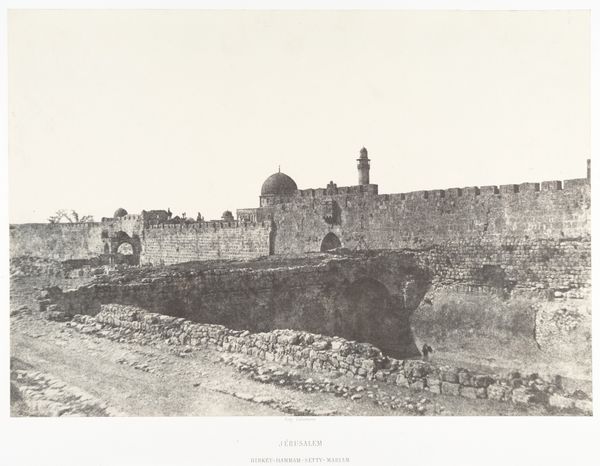
Jérusalem, Palais de rois de Jérusalem, Vue générale 1854 - 1859
0:00
0:00
photography, architecture
#
photography
#
ancient-mediterranean
#
arch
#
nature heavy
#
cityscape
#
architecture
Dimensions: Image: 23.3 x 33.3 cm (9 3/16 x 13 1/8 in.) Mount: 44.8 x 59.6 cm (17 5/8 x 23 7/16 in.)
Copyright: Public Domain
Curator: Look at the melancholy in this! Auguste Salzmann's photograph, taken between 1854 and 1859, shows us Jerusalem, specifically the Palais de rois de Jérusalem—the Palace of the Kings of Jerusalem. Editor: My first thought goes to the stone itself, you know? That building material carries the weight of millennia, doesn’t it? The way it’s worn, quarried, placed… that’s all labor and intention, now faded by time and sun. Curator: Exactly. Salzmann wasn't just capturing a building; he was showing us echoes, whispers of vanished lives, of empires and builders, through the patient lens of his camera. What I find moving is this stark beauty— the way the sunlight etches details into the stone. He wasn’t creating a pretty picture. Editor: No, he's highlighting the process. Those arched openings are so imposing. You have to think about the masons, the tools they used, how those shapes define interior space and defensive needs all in one breath. What kind of material were they quarrying? How were the building plans organized? Curator: All questions he might have been considering as well! I sense Salzmann almost communing with these ruins. The scale feels… overwhelming, doesn't it? Humanity seems dwarfed, the ephemeral nature of even royal ambitions made shockingly clear. Editor: Right, we can see the scale from his selection of frame: the height of that stonework really presses on me, making one question our ability to build such towering architecture and also the materials themselves: the sheer volume needed. Curator: You’ve just made me wonder if it's intentional— this visual weight, a reflection on colonial power, or maybe something deeper? Perhaps the camera itself is used almost like a mirror to look back at the photographer’s, and our own, present? Editor: Photography in that era also raises questions of access, the economics of producing images versus paintings. What impact did making these cityscapes reproducible have? Did that massification dilute the impact that could be found at a local scale? Curator: It seems that everything he showed us so carefully opens up an entire history, inviting both grief and something close to awe. Editor: Definitely, all things start, and all things end, this captures that perfectly!
Comments
No comments
Be the first to comment and join the conversation on the ultimate creative platform.
